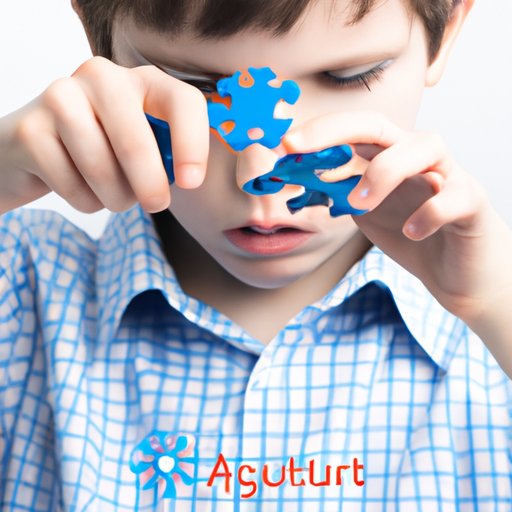Introduction
Autism is a complex developmental disorder that affects an individual’s ability to communicate and interact with others. It is a spectrum disorder, meaning that it has varying degrees of severity and symptoms. People on the autism spectrum can have difficulty with social interaction, communication, sensory processing, and repetitive behaviors.
In this article, we will explore the science behind autism. We will look at the neurological, genetic, and environmental factors associated with the disorder as well as the treatments and interventions available. Our goal is to provide a comprehensive overview of the research surrounding autism so that readers can better understand the condition.
Neurological Basis of Autism
One of the key aspects of autism is the way it affects the brain. Research has shown that there are differences in the way the brain develops for individuals with autism compared to those without. For example, one study found that children with autism had different patterns of brain development than typically developing children, with autistic brains having more growth in certain areas and less in others.
The concept of neurodiversity has also been explored in relation to autism. Neurodiversity refers to the idea that neurological differences (such as autism) should be seen as a normal part of human diversity, rather than something to be “fixed.” This perspective has become increasingly popular in recent years and has been embraced by many in the autism community.
Genetic Basis of Autism
Research has also shown that there is a link between autism and other conditions such as attention-deficit/hyperactivity disorder (ADHD) and intellectual disabilities. This suggests that there may be some underlying genetic basis for autism.
Studies have also looked at the role of heredity in autism. One study found that if one identical twin has autism, there is a 76% chance that the other twin will also have the disorder. This suggests that genetics play a role in the development of autism.
Environmental Factors
There is also research looking at the role of environmental factors in autism. Current research suggests that environmental factors such as exposure to toxins or viruses during pregnancy may increase the risk of autism. However, further research is needed to fully understand the role of environmental factors in the development of autism.
Other possible links between autism and the environment include diet, nutrition, and lack of physical activity. While there is still much to learn about these potential connections, studies have suggested that changes in diet and lifestyle may improve the symptoms of autism.
Social and Behavioral Implications
Due to their difficulty with communication and social interaction, people with autism often face challenges when interacting with others. They may have difficulty understanding social cues or expressing themselves in a way that others can understand. This can lead to frustration and difficulty forming relationships with others.
People with autism also often struggle with sensory processing issues. This means they can have difficulty processing sensory information, such as sound, light, or touch. This can lead to feelings of overwhelm and distress, as well as difficulty focusing.
Treatments and Interventions
Fortunately, there are a number of treatments and interventions available to help those living with autism. These include behavioral therapy, medication, and support groups. Behavioral therapy is a type of therapy that focuses on teaching skills such as communication, social interaction, and problem-solving. Medication can also be used to help manage symptoms such as anxiety or hyperactivity. Finally, support groups can provide a safe space for individuals to connect with others who are going through similar experiences.
Conclusion
In conclusion, this article has explored the science behind autism. We have looked at the neurological, genetic, and environmental factors associated with the disorder as well as the treatments and interventions available. While there is still much to learn about autism, it is clear that there are a number of ways to support those living with the disorder. With continued research and improved understanding, we can hope for a brighter future for those living with autism.
(Note: Is this article not meeting your expectations? Do you have knowledge or insights to share? Unlock new opportunities and expand your reach by joining our authors team. Click Registration to join us and share your expertise with our readers.)
